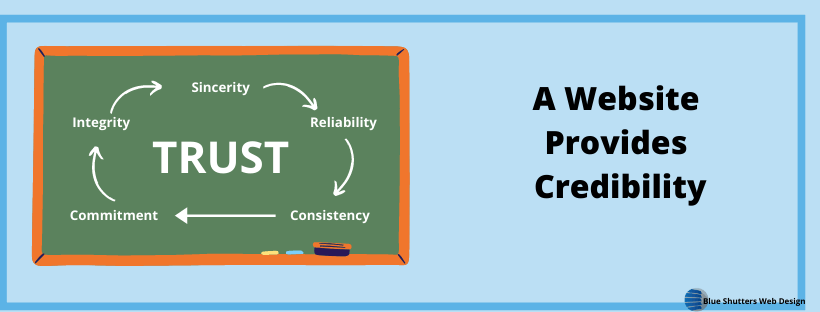- 55% of people will search online for reviews and recommendations before making a purchase, with 47% visiting the company website, 26% checking out the physical store, and 23% of people talking with friends and family.
- 6 out of every 10 small businesses in 2018 don’t have a website for their business.
- 18% of local mobile searches lead to a sale within one day.

One of the reasons to have a website is to help provide your business with credibility and give people the confidence that your business is real and not just a scam. It is not just businesses that need a website, non-profits and charities also need them as well.
I have received email, telephone calls, and mail solicitations from various non-profits and charities asking for donations but I have received more this year. I was not able to verify any of these self-described non-profits and charities as actual entities online, which was disheartening from both a business and personal perspective. I had a mailing address and a name, and my internet searches didn’t uncover so much as a free Facebook page, so those requests all went right into the trash.
For most people our budgets are tight and we want to spend our money wisely and help people where we can which means that we do need to research to whom we give our money and business. Part of that research is checking out that business or non-profit’s website and or social media to find out a bit more about them.
And if you are reading this because you are involved in a non-profit or charity, you have to ask yourself some serious questions because you have some of the same concerns that a for profit business has. You need to be able to provide credibility that your non-profit/charity is legitimate and provide details about what you do and how you help your community. With a website you can:
- Promote online giving
- Provide details about your mission
- Invite Volunteers to help
- Describe how donor's gifts are being used
Even on December 31st, when you’re busy sending out “last call” fundraising emails and blasting your social media accounts with calls-to-action, your donor is using Google to find your website...
Below are 6 ways that your website can build trust as compiled by Clutch & Co.
- Testimonials
- Certifications
- Web Design
- Policies
- Links to reliable sources
- Videos
One thing that I like to tell my customers is that websites are not set in stone and can be an iterative process, so don’t let the idea of a website overwhelm you. Start with the basics and expand incrementally, provide information to allow customers or donors to find you and learn more about you. Then slowly expand and add in more details and collect testimonials to be added at a later date.
If you would like to learn more, I am presenting a free online workshop that is being presented by Smarketing Connect, and it is coming up on December 16th, register today on Eventbrite. (note the event has passed so I removed the link)
And if you would like to skip the back and forth to find a convenient time for a meeting, check out my schedule on Calendly! Schedule Now
Share:
NOTE: I am not being paid for my mentions of people, articles, products, or books I used above nor do I receive referral
compensation unless it is disclosed within the post itself, the links are for convenience.
Unless otherwise indicated I sourced the links provided while researching a post. Links that I provide at the request of another person/business will be noted,
and if I am paid to provide a link I will disclose that information on the post in which it is applicable. All opinions are mine, regardless of whether or not I
am compensated, and are not in any way influenced by the requesting party.
DISCLAIMER: This advice is general in nature and not to be taken as personal professional advice. This blog does not provide legal advice if you need
legal advice, please contact an attorney directly.